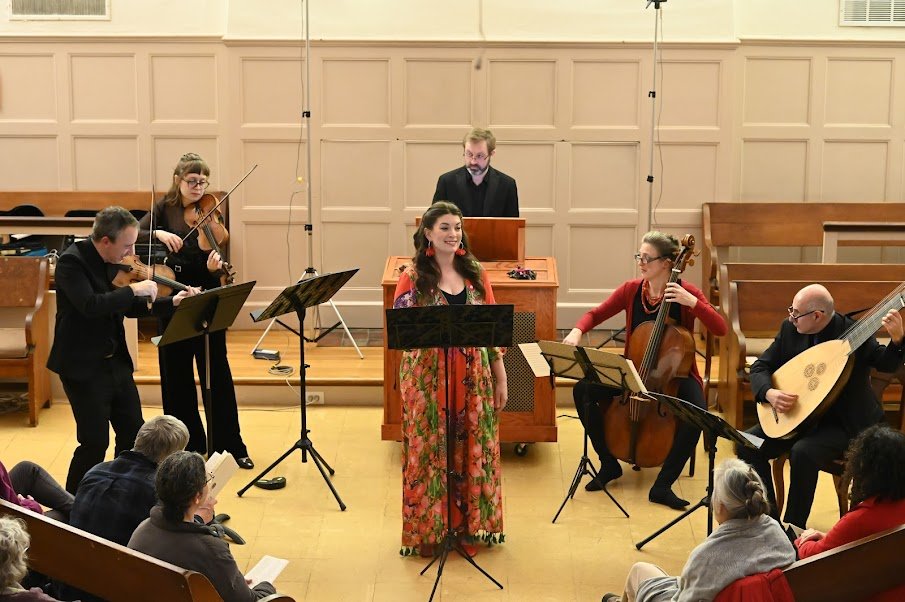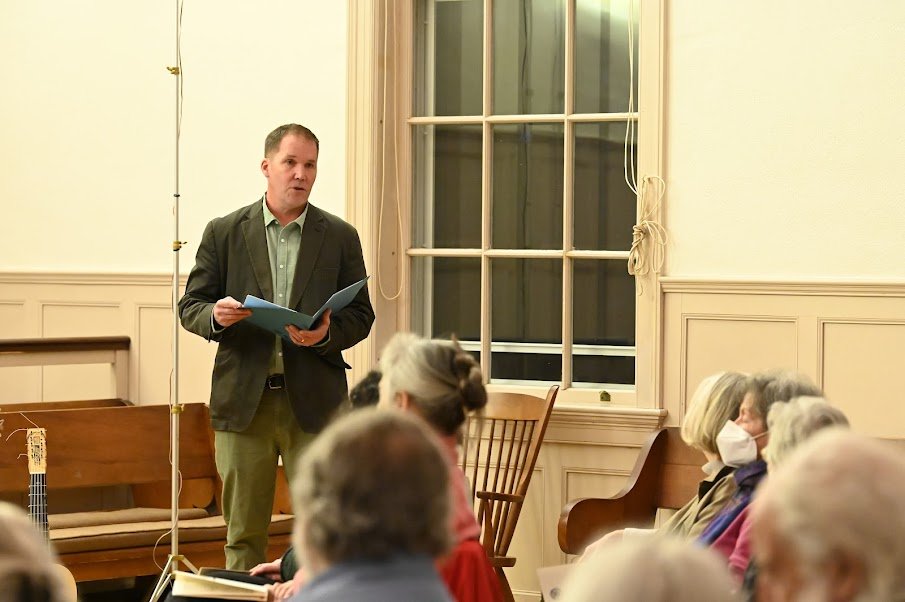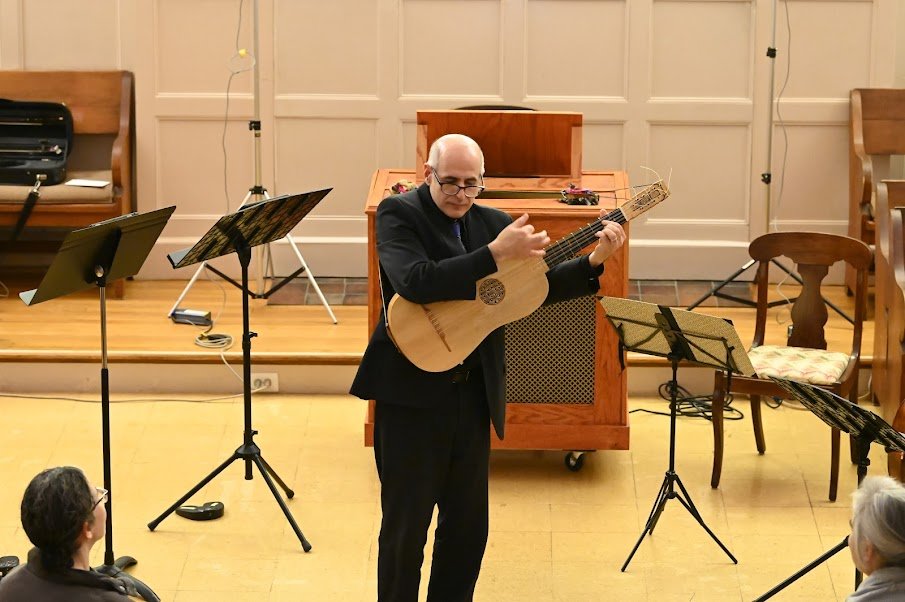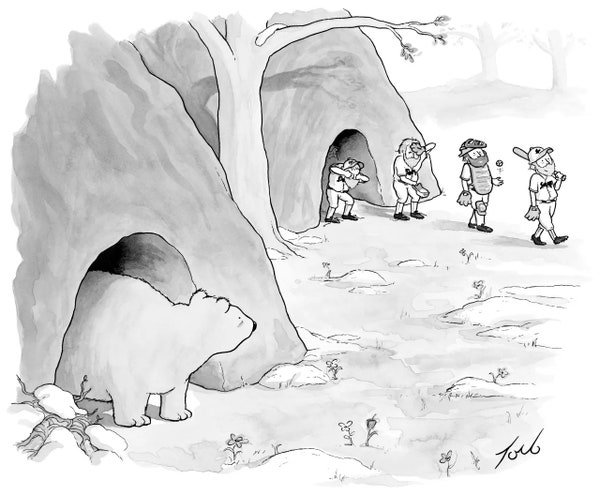Welcome to our April Newsletter!
Picnic at Sherman’s Point, Theresa Babb ©1900
As we welcome the sure signs of Spring, following a rare total solar eclipse, we all feel the draw of the outdoors— to enjoy those early blooms, some walks, and perhaps a picnic by the seashore. Sarasa is gearing up for "Birds of a Feather,” a flying finale of our 25th anniversary season over the weekend of May 10-11-12, featuring works by Purcell, Rosenmüller, Reincken, Scheidt, Schmelzer, Westhoff, and Bach’s sparkling harpsichord concerto in E major. The program focuses on compositional and performative elements of freedom and improvisation in 17th-century instrumental music, known as Stylus phantasticus, and which lay the groundwork for the genius of J.S. Bach. Performers are Maggie Cole, harpsichord; Christina Day Martinson, Megumi Stohs Lewis, violins; Jenny Stirling, viola; Jennifer Morsches, piccolo cello; Timothy Merton, cello.
Friday, May 10, 2024 at 7pm at Brattleboro Music Center, Brattleboro VT (tickets at bmcvt.org)
Saturday, May 11, 2024 at 7pm at Friends Meeting House, Cambridge
Sunday, May 12, 2024 at 3:30pm at Follen Community Church, Lexington
Listening corner:
17th-century music’s pure audacity highlighted unfettered displays of virtuosity by many wonderful instrumentalists, and contributed to the general idea of Stylus phantasticus. One featured piece in our May program demonstrates this kind of creative energy in a nutshell. In the short 2-minute movement, Il Imitatione delle campane (Imitation of bells) by Johann Paul von Westhoff (1656-1707), the cello imitates the chiming of bells (heard in every Baroque hamlet, village, or town) as the violin soars above with a brilliant bariolage effect— a rapid flurry of notes while crossing over different strings.
Westhoff was one of those special instrumentalists of the early Baroque era, a German violinist and composer, who also served as a professor of modern languages at the University of Wittenberg. The 18-year-old J.S. Bach would have met Westhoff at the court of Weimar when he was first hired there as a violinist in 1703. He no doubt came into contact with the elder musician and would have heard his works for violin. It is suggested Westhoff’s Partitas for solo violin (1696) paved the way for Bach’s own partitas and sonatas for solo violin, BWV 1001-1006. Bach may have already been inspired to write these seminal works during his early appointment in Weimar as court organist and as Kammermusicus (chamber musician) during the years 1708-1717.
Listen to the similar effect of bariolage in the opening Prelude from Bach’s Partita No. 3 in E major:
Now, check out this performance of the same Bach Partita Prelude, improvised by Bobby McFerrin!
Musical Notebook: on Collegium musicum
The Collegium musicum emerged as an important vehicle for students making music in university towns; one of the most famous and enduring was the one at Leipzig University, founded in the 17th century and then brought to prominence by G.P. Telemann in 1702. J.S. Bach famously became its director from 1729-37 and again 1739-41. With weekly meetings, it was a great opportunity to try out new works in a relaxed atmosphere (famously at Zimmerman’s coffee-house in the winter months or its outdoor coffee-garden in the summer months). Many of Bach’s secular instrumental works received their first outings on these occasions, including his solo and multiple harpsichord concerti. He capitalized on his gifts as a keyboardist, as well as those talents of his sons and the students, by creating these brilliant works for his instrument. The harpsichord concerto in E major, BWV 1053 (1739) is a reworking of the sinfonias from two sacred cantatas, BWV 169 and BWV 49 (1726), where the organ is the shining star. The number of Collegia musica in Leipzig increased with the public’s growing appetite for secular music, this in turn led to the formation of the Groß Konzertgesellschaft (‘Grand Concert Society’), which eventually became the Leipzig Gewandhaus Orchestra, and is still going strong today!
March concert round-up:
We had a fantastic weekend of concerts in March for our program, Anónimo from Amazonia: Bolivian Mission Baroque. Thanks to a Harvard/MIT Coop grant, we were lucky to be able to invite anthropologist Dr. Bret Gustafson from the University of Washington at St. Louis to join us for these concerts. He brought his expertise about the peoples, their various native languages, and the tumultuous history of this Amazon region to give greater context to the music and its positive resilience in today’s world.
Please note you can still stream our March concert until May 20th! Please share the link with friends, family and colleagues, and enjoy music that conjures the sunny climes and peoples of Bolivia.
outreach news:
Sarasa was able to bring this special Bolivian Baroque program to the Spectrum Girls Detention Center in N. Grafton, MA. We had a great session sharing this secular and sacred music from the Jesuit Missions with nine participants, six staff members, and two cooks. The girls really came alive by showing their own innate musicality and rhythmic impulses to the music we played. They especially enjoyed playing the chapchas, a rattling percussion instrument from Bolivia, made of sheep’s toenails. Here are some comments from staff and students:
Out of hibernation…
Clown Cones @2000 Wayne Thiebaud
